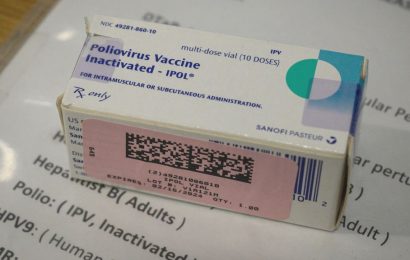
Significant benefits are seen with motavizumab, nirsevimab, and palivizumab for prevention of respiratory syncytial virus (RSV) in infants and children, according to a review published online Feb. 17 in JAMA Network Open.
Mingyao Sun, from The First Hospital of Lanzhou University in China, and colleagues conducted a systematic review and network meta-analysis to compare the efficacy and safety of monoclonal antibodies for prevention of RSV infection in infants and children. Data were included from 15 randomized clinical trials involving 18,395 eligible participants; data from 14 trials with 18,042 participants were synthesized.
The researchers found that based on moderate- to high-certainty evidence, nirsevimab, palivizumab, and motavizumab were associated with significantly reduced RSV-related infections (−123, −108, and −136 infections per 1,000 participants, respectively) and RSV-related hospitalizations (−54, −39, and −48 per 1,000 participants, respectively) compared with placebo.
Both motavizumab and palivizumab were associated with significant reductions in intensive care unit admissions (−8 and −5 per 1,000 participants, respectively) and supplemental oxygen use (−59 and −55 per 1,000 participants), and nirsevimab was associated with significantly reduced supplemental oxygen use (−59 per 1,000 participants) based on moderate-certainty evidence. All-cause mortality and drug-related adverse events did not differ significantly between the groups. No significant benefits for the outcomes of interest were seen for suptavumab.
“These findings suggest that motavizumab, nirsevimab, and palivizumab are associated with reduced rates of RSV infections and hospitalizations,” the authors write. “Similar results were observed in the rate of supplemental oxygen use.”
More information:
Mingyao Sun et al, Monoclonal Antibody for the Prevention of Respiratory Syncytial Virus in Infants and Children, JAMA Network Open (2023). DOI: 10.1001/jamanetworkopen.2023.0023
Journal information:
JAMA Network Open
Source: Read Full Article


